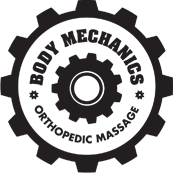What Is a Massage Modality? Why It Matters for Your Massage Results
When you book a massage, you might hear your therapist or the website mention different “modalities” used during your session. But what does a massage modality mean? Booking a massage and getting the results you want out of it can be super confusing and quite daunting. The internet is full of reviews of terrible massage experiences, yet we know from personal experience that no massage therapist is going to work thinning “I am going to give a terrible massage.
In the massage therapy world, a “modality” is just industry lingo for a specific massage technique or method—they are buzzwords that actually do not mean much but seek to describe a way of doing things. Modalities can range from deep tissue and myofascial release to cupping, trigger point therapy, Swedish massage, and many more. We have a lot of modalities on our website as it tends to be what people are looking for. They simply Google ‘trigger point massage’ and (hopefully) bam, there we are.
Why Do Massage Modalities Matter?
The problem is that they are fairly loosely defined, and many people can have vastly different definitions of what a modality includes. Two people can think they are talking about the same thing, and indeed, they are not. Additionally, each person’s body is different, and so are their treatment goals. Whether you’re recovering from an injury, managing chronic pain, easing tension, or just looking to relax, your therapist will often combine several modalities in one session to meet your specific needs.
For example, a therapist might describe:
-
A session may start with Swedish techniques to warm up the tissues,
-
Move into trigger point therapy to release specific areas of tension,
-
And finish with myofascial work or stretching to lengthen tight areas and promote mobility.
By blending techniques, your therapist can customize the massage in real time based on how your body responds. The problem is, how thing feel is more important than what they are called. Is swedish long relaxing strokes? or is it more vigorous? Depends on where you were trained.
Take a look at this video for a little help on what a modality is:
Common Massage Modalities You Might Experience
Here are just a few of the many modalities therapists may draw from:
-
Swedish Massage – Gentle, flowing strokes designed to promote relaxation and circulation, but this can also be more vigorous.
-
Deep Tissue Massage – A slower, firmer technique that targets deeper muscle layers to relieve chronic tension. The question remains….deep to what? Massage is very subjective so this would need to be addressed.
-
Myofascial Release – Focuses on the connective tissue and pushing it around to help create a feeling of freedom in the packaging.
-
Trigger Point Therapy – Targets hyper-irritable spots in the muscle that can cause referred pain.
-
Cupping Therapy – Uses suction to lift soft tissue, increase range of motion, and reduce muscle tension. Cupping can be really varied though so you would need to ask a lot of questions. We can have them be still, move them, pop them and more!
-
Pin and Stretch – A technique where you pin the tissue down while the client moves or you move the client.
Why Communication Is Key
No matter how skilled your massage therapist is, they’re not mind-readers, which is why your input is so important. It is more important how things feel, than what they are called.
Before your session begins, take a moment to talk about:
-
What brought you in today (stress, pain, postural problems)? What is your goal? Sometimes we treat a sensation you have by providing another sensation.
-
What pressure feels good for you (light, medium, deep), keeping in mind things are subjective?
-
Any areas you want to avoid or prioritize> What works for you? What do you want to focus on.
-
Past experiences (positive or negative) that might inform today’s treatment- tell us about your preferences and what works for you and what has not.
Even during the session, giving your therapist feedback helps ensure you get the results you’re looking for. Whether it’s asking for more pressure, less pressure, or saying “that spot feels perfect”—your body is the expert, and your voice helps guide the work. Communication is key to having a great massage experience.
The Takeaway
Massage isn’t one-size-fits-all, and neither are the techniques your therapist uses. Understanding that “modality” simply means “technique” helps demystify the process and opens the door to more collaborative care. When you and your therapist communicate clearly about your goals and preferences, it empowers them to choose the right mix of modalities to support your wellness journey.
So next time you’re on the table, feel confident asking questions and sharing your needs. Your best massage starts with great communication.
